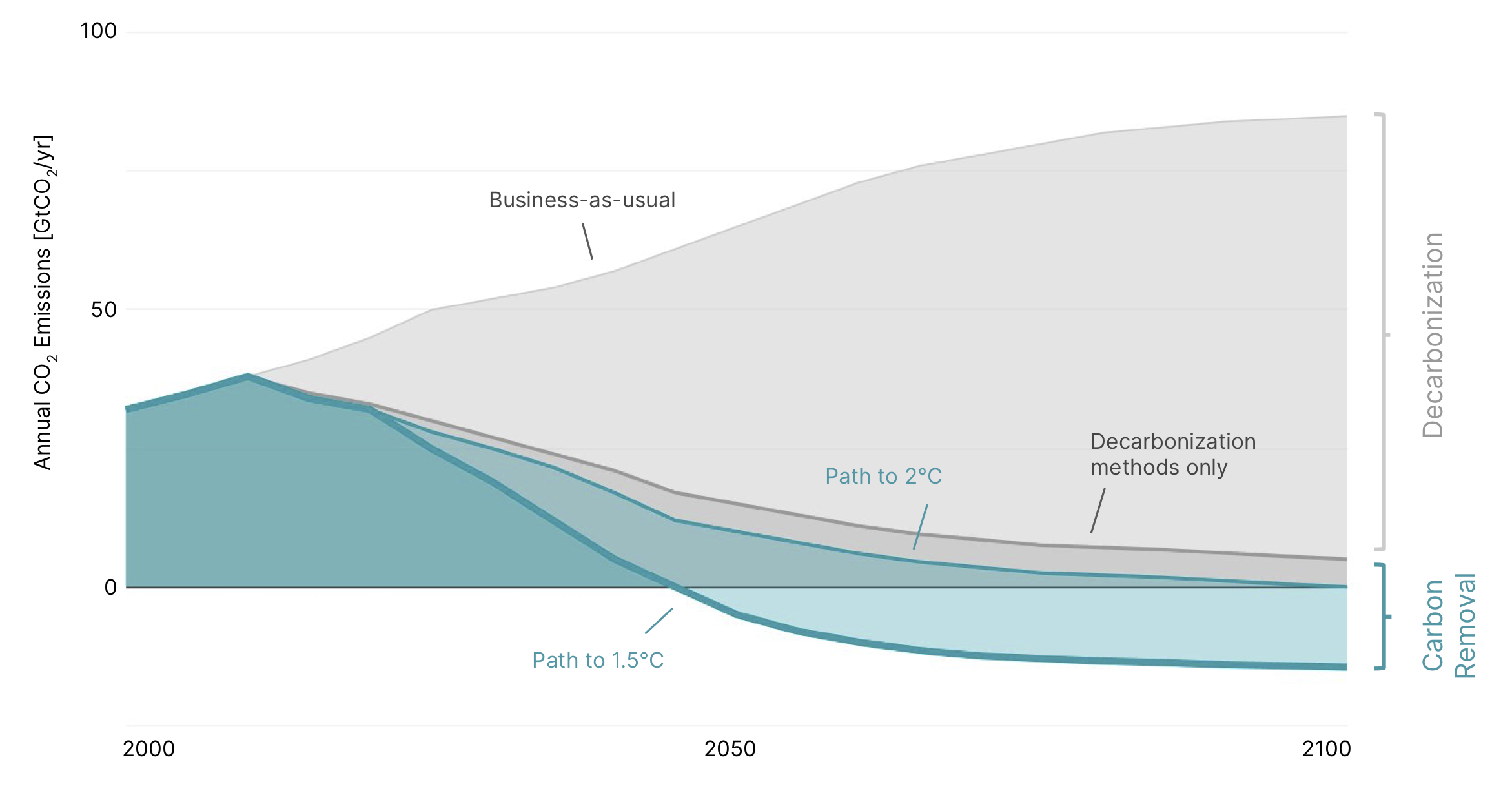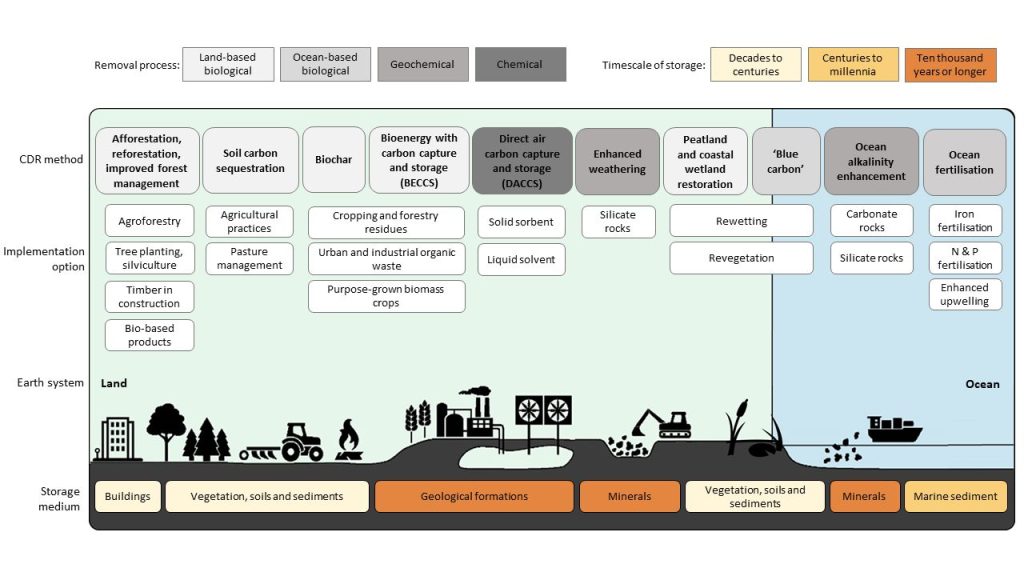Context
The earliest effects of global warming are already apparent, and they pose serious hazards to ecosystems and communities this century. At the Paris climate conference (COP21) in 2015, governments agreed to limit global warming to well below 2 °C above pre-industrial levels. To achieve this, the world must reduce CO2 emissions to around net zero by 2050. Therefore, numerous countries along the developmental spectrum have declared emission reduction targets, including net-zero strategies. However, the policies put in place since the Paris Agreement, leave us well short of the trajectory needed to meet that goal. Even with the most ambitious reductions in gross emissions, it is almost certain that cumulative CO2 emissions between now and 2050 will exceed the "carbon budget" consistent with a climate target of well below 2°C. Consequently, carbon dioxide removal (CDR) at the scale of 10 Gt a year will be required by 2050, in addition to extensive decarbonization. Carbon Dioxide Removal could in principle contribute in important ways to reaching the Paris Agreement goals since negative emission technologies are particularly important to reach carbon neutrality until 2050.
Prominent approaches to CDR discussed in the scientific literature include nature-based solutions such as afforestation and change of land use, enhanced weathering, as well as technological solutions such as direct air capture and storage of CO2 (DACS). While all CDR solutions come with risks and challenges, scientists agree that a portfolio of solutions will be needed to meet the Gt scale required to achieve the temperature target. While land and water consumption are the main barriers to scalability for nature-based solutions, for technology-based solutions it is the cost of energy and materials, as well as uncertainty about future demand, that prevent them from scaling up. Although DACS is among the most expensive CDR solutions today, it has been identified as promising and scalable to remove large amounts of CO2. However, major hurdles for deployment persist. Especially, the feasibility of large-scale projects remains contested. While current deployment is known, large-scale deployment of DACS will require private and public funding. Public support for market development will be critical, as private investment is unlikely to be enough to scale the technology sufficiently and reduce costs.
The Carbon Removal Lab investigates socio-political, socio-technical, and techno-economic issues related to CDR. Specifically, we address deployment challenges by conducting three projects on key issues related to the policy design of CDR technologies, particularly in the context of large-scale technical CDR solutions. The first project addresses the financing issues associated with large-scale deployment of DACS, while the second examines public opinion on policies that could incentivize CDR, and the third explores policy pathways to mobilize DACS. The goal of the Carbon Removal Lab is to identify policies that effectively incentivise CDR deployment on a larger scale but are politically feasible in view of widespread public concerns about different aspects of CDR. Doing so, we apply an interdisciplinary and policy-focused research approach following in the footsteps of previous ISTP projects.

